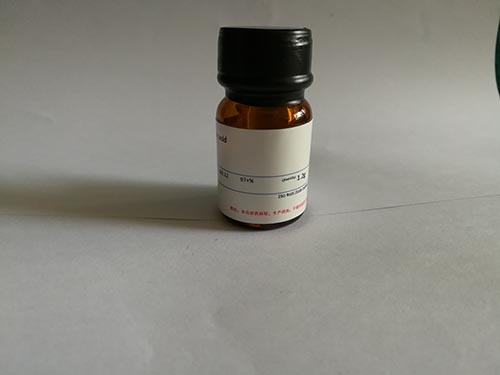Horse-derived component nucleic acid detection kit (one-tube PCR-fluorescent probe method) instruction manual
Horse-derived component nucleic acid detection kit (one-tube PCR-fluorescent probe method) instruction manual
â—† Product Description
The species identification series can amplify specific nucleic acid fragments of animal-derived components in foods, feeds and the like, and judge the results by real-time amplification curves. This product is used for the detection of equine-derived components with a detection limit of 0.1% .
â—† Product composition (96 test)
021112LII | |
Reagent | content |
A-Mayuan-P | 20μL × 8 tubes × 12 rows |
NG-P | 100μL × 3 |
PG-Mayuan-P | 100μL × 2 |
- Applicable instrument
Real-time fluorescence PCR instrument such as ABI 7500, CFX 96, Mx 3005P, LineGene9600.
â—† Self-supplied supplies and instruments
1 ice box; 2 pipettes (0.5-10μL, 10-100μL, 100-1000μL) and matching sterilization tips; 3 centrifuges; 4 vortex mixer; 5 metal bath.
â—† Notes
1. This reagent has high detection sensitivity. In order to prevent pollution, the experiment is to be partitioned.
1) First zone: sample preparation zone.
2) The second zone: the template addition zone.
3) Zone 3: Amplification and product analysis zone.
★ It is best to physically isolate the partitions to avoid contamination caused by human factors.
2. Work clothes and latex gloves are worn during the experiment, and tools are used independently in different areas. Gloves and lab coats need to be replaced.
3. Strictly follow the operation steps, reagent preparation and sample loading steps, please operate in strict accordance with the instructions on the ice box.
4. The components in the reaction solution are sensitive to light and should be stored away from light . The reagent should be completely thawed before use, but repeated freezing and thawing should be avoided. It is recommended to centrifuge for 30 seconds before use, and store the reaction solution in an appropriate volume according to the frequency of detection.
5. After the reaction is completed, the expansion tube should be placed in a sealed bag and discarded. On the same day, the lid is opened and the aerosol is easily contaminated. It is forbidden to open the lid.
6. Do not mix different batches of reagents used within the validity period.
â—† Sample processing
Samples prepared by SB/T 10923-2012 Determination of Animal-derived Components in Meat and Meat Products by Real-Time Fluorescence PCR Method or other standards are prepared for use.
The collection and preparation of samples is an important step in the identification of animals. To prevent cross-contamination, disposable consumables should be used. The mortar should be dry-baked at 160 °C for 2 h. Other vessels that should not be dry-baked or high-pressure treated should use 1%. Soak in sodium hypochlorite solution.
Sampling should take muscle tissue as much as possible. For the same batch of samples, multiple points should be collected and combined, and then homogenized as one sample to extract DNA.
The sampling process should be completed quickly. The sample taken is quickly placed in a tissue agitator to homogenize into a braid, fully mixed, and 0.1 g of the well-mixed sample is taken and homogenized by liquid nitrogen or homogenizer.
For detailed steps, please follow the standard operation or check the food safety software.
â—† Experimental operation
1. Template preparation (sample preparation area)
It is recommended to use the supporting animal genomic DNA extraction kit. The specific process is detailed in the product manual.
2. Add a template (template addition area, placed on the ice box)
Cut the PCR tube containing the reaction number, and place it at room temperature to be thawed. After centrifugation for 30 seconds, uncover the sealing film. Add 5 μL of template to each reaction solution in the order of NG, sample template to be tested. , PG-Mayuan-P. After the matching PCR tube cap was covered, the mixture was vortexed for 30 s, centrifuged for 1 min, and the PCR amplification reaction was immediately performed.
3. Amplification reaction (amplification and product analysis area)
Using a real-time PCR instrument, the fluorophore was selected for FAM and the quencher group was selected for TAMRA.
Set up the amplification reaction according to the following conditions:
PCR cycle | Fluorescence collection site | ||
95 ° C | 10 minutes | 1 cycle | - |
95 ° C | 15 seconds | 40 cycles | - |
60 ° C | 1 minute | ※ | |
4. Baseline and threshold settings
The baseline adjustment takes 3-15 cycles of fluorescence signal, and the threshold line should exceed the highest point of the negative control amplification curve.
â—† Result judgment
The sample has no Ct value, and the curve is straight or slightly oblique. There is no “S†type amplification curve, and the sample can be reported as negative, without horse-derived components or content below the detection limit;
The test sample Ct ≤ 35, the curve is an "S" type amplification curve, which can directly report the sample positive, containing horse-derived components;
The test sample Ct>35, can directly report the sample negative, does not contain horse-derived components or the content is below the detection limit.
- The NG reaction is a smooth straight line, and the PG reaction is an "S" type amplification curve. The test result is valid, otherwise it is invalid. If the duplicate test results are still invalid, please contact technical support.

Nuts are a group of cleistoses that have a hard skin and contain a single seed. It is the essence of plants, rich in nutrition, containing higher minerals, vitamins, oil and protein, eating more can promote growth and development, increase physical fitness. Common nuts include walnuts, peanuts, almonds, cashews, macadamia nuts, pistachio nuts and so on.
Nuts, Almonds,Walnuts,Pistachio nuts,Macadamia nuts
Xi'an Gawen Biotechnology Co., Ltd , https://www.seoagolyn.com